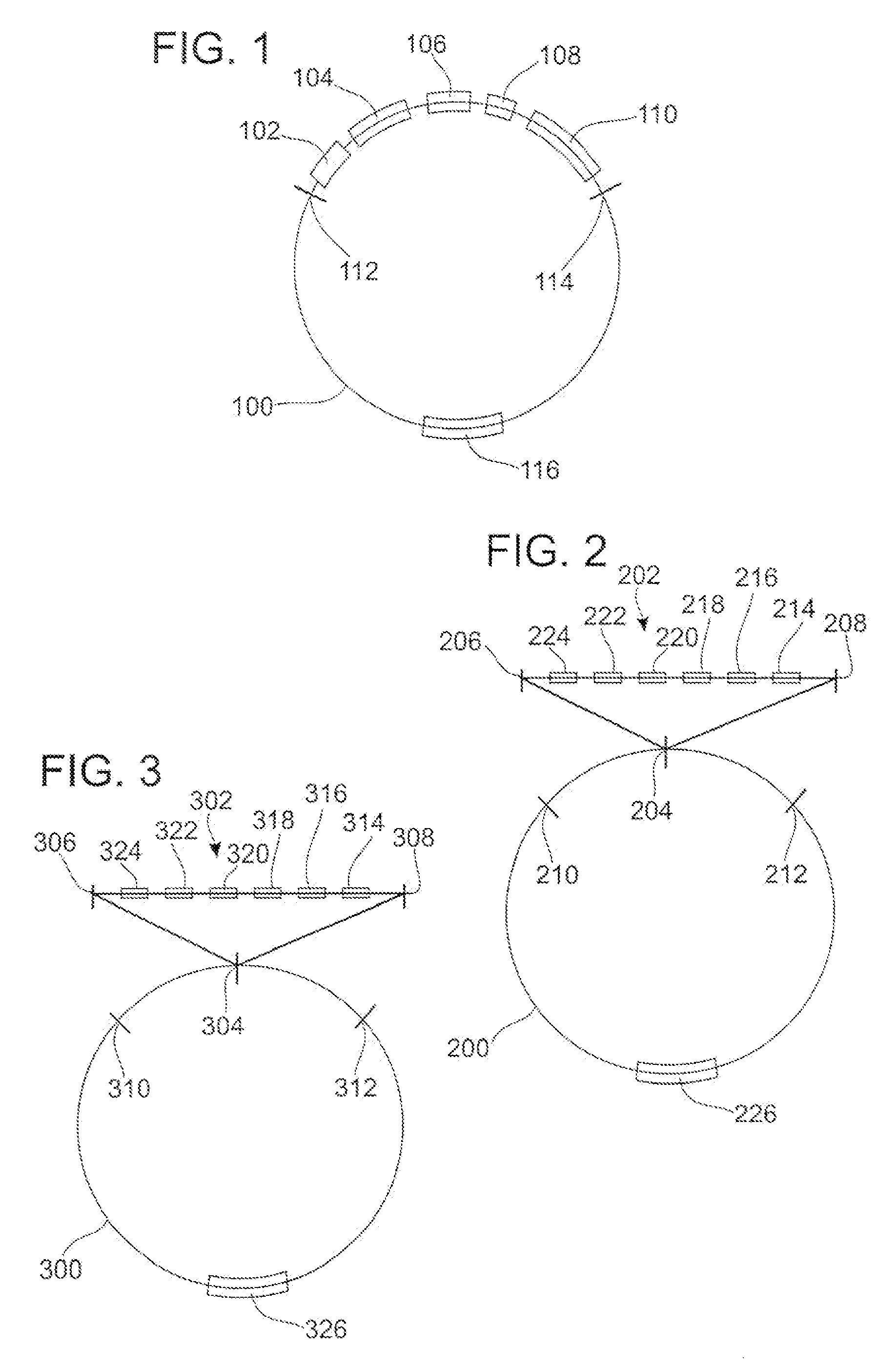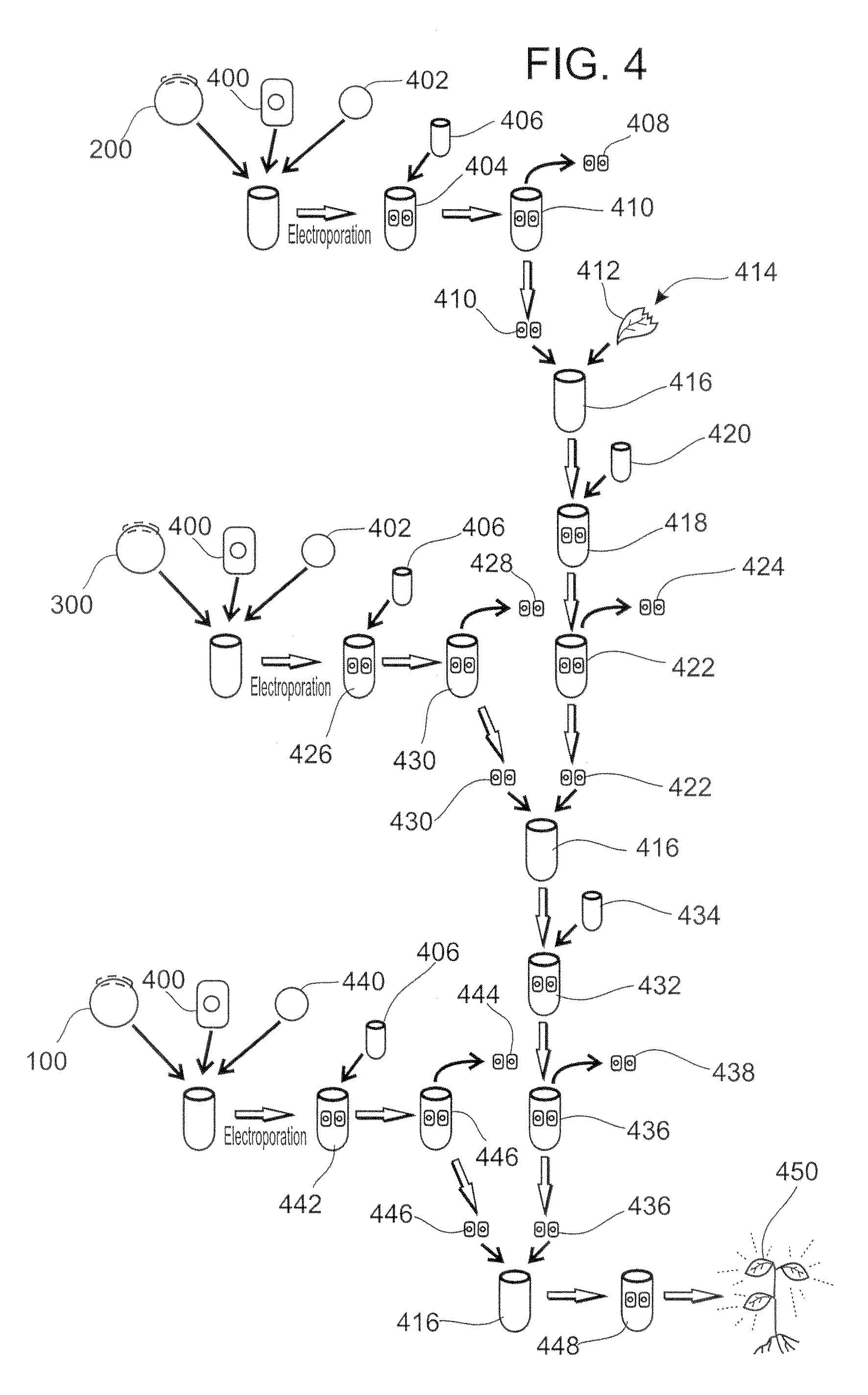Transgenic bioluminescent plants
a bioluminescent plant and transgenic technology, applied in the field of transgenic bioluminescent plants, can solve the problems of limiting the number of suitable hosts, destroying the host organism, and limiting all efforts, so as to enhance the utility of the present invention
- Summary
- Abstract
- Description
- Claims
- Application Information
AI Technical Summary
Benefits of technology
Problems solved by technology
Method used
Image
Examples
Embodiment Construction
[0037]In describing the present invention, the following terminology will be used in accordance with the definitions set out below. This terminology is well known to those skilled in the art.
[0038]“Polynucleotide” refers to a polymeric form of ribonucleotides or deoxyribonucleotides of any length. This term refers only to the primary structure of the molecule. Thus, the term includes double- and single-stranded DNA, as well as double- and single-stranded RNA. It also includes modified (modification, for example, by methylation, phosphorylation, and / or capping) and unmodified forms of the polynucleotide.
[0039]“Recombinant polynucleotide” refers to a polynucleotide of genomic cDNA, of semisynthetic or synthetic origin, which by virtue of its origin or manipulation: (1) is not associated with all or a portion of the polynucleotide with which it is associated in nature; and / or (2) is linked to a polynucleotide other than that to which it is linked in nature; or (3) does not occur in nat...
PUM
| Property | Measurement | Unit |
|---|---|---|
| half life | aaaaa | aaaaa |
| half life | aaaaa | aaaaa |
| resistance | aaaaa | aaaaa |
Abstract
Description
Claims
Application Information
 Login to View More
Login to View More - R&D
- Intellectual Property
- Life Sciences
- Materials
- Tech Scout
- Unparalleled Data Quality
- Higher Quality Content
- 60% Fewer Hallucinations
Browse by: Latest US Patents, China's latest patents, Technical Efficacy Thesaurus, Application Domain, Technology Topic, Popular Technical Reports.
© 2025 PatSnap. All rights reserved.Legal|Privacy policy|Modern Slavery Act Transparency Statement|Sitemap|About US| Contact US: help@patsnap.com


